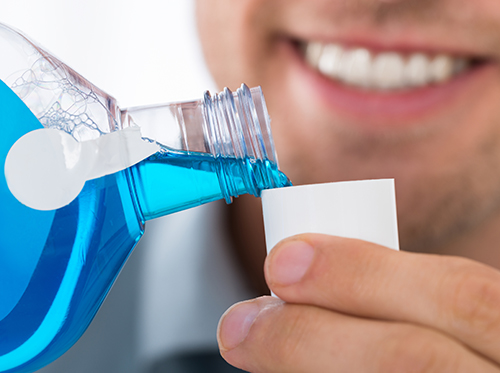Diet Soda vs. Regular Soda: Which is better for teeth?
November 6th, 2019

When most patients ask Drs. Rottschalk, Acker, and Froidcoeur this question, they're thinking strictly about sugar content — cut out the bacteria-feeding sugar that's present in regular soda by opting for a diet soda and it will be better for your teeth. That seems logical, right? Well, there's a bit more to it than that. Let's take a closer look at how any kind of soda can affect your dental health.
Diet Soda – Why it can also lead to tooth decay
The main culprit in these drinks that leads to decay is the acid content. Diet sodas and other sugar-free drinks are usually highly acidic, which weakens the enamel on your teeth and makes them more susceptible to cavities and dental erosion. The level of phosphoric acid, citric acid, and/or tartaric acid is usually high in sugar-free drinks so it's best to avoid them.
Some patients also enjoy drinking orange juice or other citrus juices. These drinks are high in citric acid and have the same effect on the enamel of your teeth.
So what about regular soda?
We know the acidity of diet sodas and sugar-free drinks contributes to tooth decay, so what about regular soda? Like we alluded to earlier, regular soda is high in sugar — a 12 ounce can contains roughly ten teaspoons of sugar — and sugar feeds the decay-causing bacteria in the mouth. This also includes sports drinks and energy drinks, which are highly acidic and loaded with sugar too. So these drinks are a double-whammy of sugar and acidity your teeth and body simply don't need.
The problems caused by both diet and regular soda is exacerbated when you sip on them throughout the day. If you drink it all in one sitting, you won't be washing sugar and/or acids over your teeth all day long and your saliva will have a chance to neutralize the pH in your mouth.
The best beverages to drink and how to drink them
Drinking beverages that are lower in acid is a good step to take to keep your enamel strong. According to a study conducted by Matthew M. Rodgers and J. Anthony von Fraunhofer at the University of Michigan, your best bets are plain water, black tea or coffee, and if you opt for a soda, root beer. These drinks dissolved the least amount of enamel when measured 14 days after consumption of the beverage.
If you still choose to drink soda, diet soda, sugar-free drinks, or juices here are some other tips to lessen tooth decay:
- Drink your soda or acidic beverages through a straw to minimize contact with teeth
- Rinse with water immediately after consumption of the beverage
- Avoid brushing your teeth between 30 minutes to an hour after drinking the beverage as this has been shown to spread the acids before your saliva can bring your mouth back to a neutral pH
- Avoid drinks that have acids listed on the ingredients label
Still have questions about soda, sugar, and acid? Give our Fairview Heights, IL office a call and we’d be happy to help!
How do I handle my child’s dental emergency?
October 30th, 2019

Kids are active, and with lots of activity comes the potential for mishaps. Before an emergency occurs, you’d be smart to stay informed about the problems your child may encounter.
Here are a few things you should keep in mind about teething pain, loose baby teeth, and other common dental issues.
Teething Pain
Discomfort while teething is common for babies from the time they are four months until they are about two and a half. Teething can cause drooling, tender gums, and irritability. To help relieve your child’s discomfort, gently rub his or her gums with wet gauze or offer a cold teething ring.
Loose Baby Tooth
It is normal for a child’s first set of teeth to become loose and fall out. If a tooth is knocked out by a forceful blow, however, you should make an appointment with our office to determine whether any damage may have occurred. You should also book an appointment if the baby tooth that’s on its way out develops a crack but doesn’t fully fall out.
Issues with Permanent Teeth
Sometimes, permanent teeth can come in before the baby teeth have fallen out. In this event, schedule an appointment with us even if your child does not report discomfort or pain. Drs. Rottschalk, Acker, and Froidcoeur will need to determine if the permanent teeth are coming in correctly to avoid problems later on.
Bleeding Gums
Bleeding gums can have multiple causes: periodontal disease, rough brushing, or an injury to the gum tissue. If your child experiences heavy bleeding, it’s vital to call our office immediately. Wash the youngster’s mouth with warm salt water and put gentle pressure on the area to soothe it before your appointment.
Drs. Rottschalk, Acker, and Froidcoeur and our team are always here to address any concerns you may have regarding your child’s dental health. Contact our Fairview Heights, IL office for emergency services 24 hours a day, seven days a week.
Considerations When Picking the Right Mouthwash
October 23rd, 2019

A solid oral health routine begins with daily brushing, flossing, and rinsing. Without a consistent oral health regimen, you may begin to experience tooth decay and bacterial infections. Few patients ask Drs. Rottschalk, Acker, and Froidcoeur about different mouthwash options, so we’ve put together a list of the conditions that mouthwashes can treat. This should help you decide which oral rinse would be best for you.
Gum Health
Antiseptic mouthwashes reduce large amounts of bacteria on and near the gum line and generally help to decrease your chances of developing gingivitis. The key ingredients of antiseptic mouthwashes are antibacterial and antimicrobial items. Antiseptic mouthwash is a preferable option if you are concerned about the general gum health of your mouth.
Fluoride
Fluoride is a great tool for preventive tooth decay treatment. It prevents tooth decay and is great for oral health in general because it kills germs that can live in your mouth. Fluoride also builds stronger teeth. If you’re a bottled water drinker, Drs. Rottschalk, Acker, and Froidcoeur may recommend that you purchase a simple fluoride rinse to use after brushing.
Bad Breath
Fluoride mouthwash can be used to fight any bad breath issues you may be facing. It’s designed to combat any bacteria that might be building up in your mouth. Most mouthwashes will help eliminate bad breath, but some are specifically designed to address this difficult problem. If you feel as though this might be turning into a chronic problem, please contact Drs. Rottschalk, Acker, and Froidcoeur to discuss other options that would be effective for treating your symptoms.
American Dental Association (ADA Approval)
The ADA reviews all mouth rinses for safety measures and to prove effectiveness. Any mouthwash approved by the ADA has met strict guidelines according to whether the manufacturer’s claims are supported with scientific evidence. If you’re looking for a quality mouthwash, look for one that has the ADA seal of approval to ensure you have a great rinse for your mouth.
Considerations
When you’re trying to decide which mouthwash to pick, contact our Fairview Heights, IL or ask Drs. Rottschalk, Acker, and Froidcoeur during your next appointment. If you experience a burning sensation in the soft tissues of your mouth, be sure to discontinue use immediately. Avoid letting children under age six use a mouth rinse, and be sure to keep all mouthwashes out of the reach of children, because they contain alcohol and other substances that could be harmful.
Broken Tooth: Is It an emergency or not?
October 16th, 2019

Have you ever had that sinking feeling after biting into something soft and chewy and feeling something hard and crunchy instead? You’ve chipped or broken a tooth, but what should you do next? First try to assess the damage by determining whether it’s a chip or a whole tooth.
As Drs. Rottschalk, Acker, and Froidcoeur will tell you, a broken or chipped tooth is usually not a dental emergency unless you are experiencing a great deal of pain or bleeding, but you should contact us for an appointment shortly afterward. Be sure to mention that you have a broken tooth so we can fit you into our schedule quickly. After a thorough evaluation, we’ll recommend a course of action. If it is a small chip, we may simply smooth it out. For a larger break, the dentist may fill in the space with a composite material that matches your other teeth.
Emergency Dental Care
If you are in severe pain, are bleeding excessively, have a major break, or have lost a tooth, that is a dental emergency and you should contact us. As emergency dental specialists, we’ll be able to schedule an appointment immediately and advise you on the next steps to take.
You can rinse your mouth with warm water and apply pressure to stop the bleeding. An ice pack will help reduce any swelling. Do not take any aspirin as that could increase the amount of bleeding. Should your tooth be knocked out completely, rinse it under running water but do not scrub it. Hold the tooth only by the crown, or the part you normally see above the gum line, not by the root. If you can, put the tooth back into the socket while you travel to our office, or put it in a mild salt solution or milk. Don’t let the tooth become dry, because this can lead to damage. Once you get to our office, our dentist will determine whether the tooth can be saved or if it will need to be replaced.
A broken tooth may not always be an emergency, but it’s best to have it treated with us at Dr. John Rottschalk Dental Group. While it may only be a cosmetic problem at first, if left too long without treatment, you may experience further damage to your tooth and mouth.





